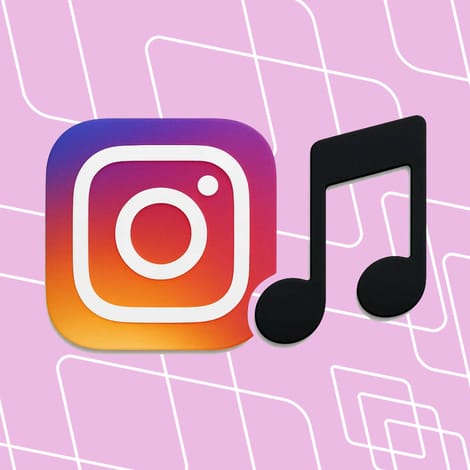The Real Earnings of Content Creators: Breaking Down the Numbers
How much do content creators actually earn? This guide breaks down monetization strategies, income streams, and real earnings for creators across platforms like YouTube, Instagram, and TikTok. Learn how to diversify your income, turn your passion into profit, and thrive in the creator economy!
Table of contents

Ali Abdaal earns more as a YouTuber than he does as a doctor. While he committed 40-60 hours a week as a junior doctor in the UK, he only needed 5-10 hours for his YouTube channel. But after realizing he was making three times his doctor's salary, he jumped to pursue YouTube full-time.
With news of more and more content creators making more than traditional 9–5 jobs, pursuing a career in content creation is becoming an increasingly attractive option for many.
What Is a Content Creator?
A content creator is someone who creates user-generated content on the internet.
Essentially, anyone who creates content could be considered a content creator, including writers, graphic designers, coaches, and, of course, YouTubers and social media stars.
The 2025 Creator Economy Overview
Today, over 200M creators compete for your attention on social media applications. While that may sound overbearing, consider the estimated 4.9 billion people who use social media globally.
The creator economy is estimated to be worth $250 billion today, and it's clear it will continue growing.
The attention economy = the real economy
The equation is simple: if you've got their attention, you've got their money.
Think about it: Every single moment, whether it's choosing to watch Netflix or scroll on Instagram, is a decision you're choosing to allocate your attention to.
This incentivizes both companies and creators to create content that caters to our intrinsic needs, wants, desires, and preferences, ultimately improving the quality of our lives and satisfying our motivators.
So next time you feel overwhelmed by having to cater to the algorithms, Remember there are real people behind those numbers.
Download the perfect soundtrack for your videos with ProTunes One
Sign up to access high-quality music for your projects.
Sign Up NowThe Most Lucrative Revenue Streams for Content Creators
For creators, security comes from diversifying their income. Full-time creators have at least 6 different income streams. This is where the real money lies.
Moreover, 75% of creators emphasize that you need multiple income streams for this career to be financially sustainable.
The most lucrative income streams of six-figure creators include selling digital and physical products, platform payouts, and in-person and online consulting and coaching.
Let's break down different ways to monetize your content as a creator:
1. Sponsorships:
Brand Partnerships, on average make up the most significant amount of a digital creator's income. The amount of revenue earned from a brand deal is based on the creator's reach, following, engagement, and prevalence within their niche.
2. Platform-Specific Monetization:
YouTube, Instagram, and TikTok all provide different methods to monetize your social media content directly on the platforms.
- YouTube: Creators enrolled in the YouTube Partner Program (YPP) earn 55% of the revenue generated from ads on a video. However, ads aren't the only ways YouTubers make a living on the video-sharing platform, they also earn money through Channel Memberships, Super Chat, and YouTube Shopping.
- Instagram: influencers can monetize their audience directly through Instagram's monetization opportunities. There are currently 4 in-app monetization opportunities: subscriptions, badges, gifts, and bonuses. That being said, most creators on Instagram make the majority of their income through sponsored posts and affiliate marketing.
- TikTok: The most popular way TikTokers make money on the platform is through the TikTok Rewards Program, TikTok Series, TikTok Shop, and subscriptions, as well as by receiving live gifts and tips.
- Twitch: Streamers earn their dollars by showing the audience how to play games and engage with their community in real-time. They monetize through subscriptions, Bits (a virtual currency used for tipping), ad revenue, sponsorships, and more.
3. Affiliate Links:
Creators can also earn money through affiliate commissions, which create an additional source of passive income. They sign up for an affiliate program like Amazon or Shopify, share the product link on social media, and receive a payout each time a follower purchases through their link.
4. Sell Physical or Digital Products:
Selling products is a popular revenue stream for creators, whether physical or digital. Digital products, particularly online courses, are the most profitable income stream. These digital offerings are also advantageous over physical ones since they require minimal production and after-sale support.
Author and creator Lauren Kay believes educational content creators could make a decent living doing this with as little as 10K followers.
@laurenkaywrites sharing the *actual* email exchange so you can see how much control i had as a debut author when it came to my book’s cover
♬ original sound - Lauren Kay | YA Author ✍️
5. Exclusive Content Platforms:
Exclusive content platforms, such as Patreon and Passes, allow creators to offer different membership levels for a subscription fee, each with its perks. These can include bonus podcast episodes, behind-the-scenes access, early content releases, and one-on-one messaging.
Creators can also earn a substantial income from these membership sites. According to Patreon, creators, on average, make 40% of their income from the platform.
6. Sell Your Services:
Beginner content creators don't make money through sponsorships and AdSense; they make it by selling their services. 36% of full-time creators earn their first dollar through professional services such as coaching, consulting, or freelancing.
The best platforms (and most widely used by creators and freelancers) are Udemy and Coursera for selling courses, Upwork and Fiverr for freelancing and service-based work, and Gumroad & Payhip for selling digital products like e-books, templates, and guides.
Now that we've covered how creators earn money, it's time to determine how much they make.
How Much Money Do Content Creators Make on YouTube, Instagram, and TikTok?

For many creators, the traditional 9-to-5 job has transformed into a full-fledged career – but how much are they actually earning, and is the money really that good?
Let’s break it down, platform by platform.
How Much Do Creators Make on YouTube?
YouTuber creators earn money from the ads displayed on their videos. This is based on the Revenue Per Mille (RPM), which measures how much a creator earns per 1,000 views. The average RPM ranges from $1.25 to $2.50 but can be as high as $60 depending on the niche.
Some of the highest-paying RPM niches include:
- Finance
- Real Estate
- Software Tutorials
- Web Design
- Automotive
Creators also have varying sources of income streams, from sponsorships to courses to exclusive groups, but in general, most YouTubers make money with YouTube Ads.
Download the perfect soundtrack for your videos with ProTunes One
Sign up to access high-quality music for your projects.
Sign Up NowHere's how much YouTubers with different subscriber counts earn in a month just from ads:
- 1K subs: Irina Dee (real estate niche) reported making $534.66 in her first month of monetization.
- 19K subs: Chrrism (gaming niche) reported making $2,956.04 monthly.
- 50K subs: Alexis Eldredge (lifestyle vlogger) reported making $3,838.47 monthly.
- 115K subs: Rockstar Eater (food and restaurant review niche) made $5,600.60 monthly.
- 1M subs: Shelby Church (tech and lifestyle niche) earned $11,339.77 monthly.
Keep in mind: The amount a creator earns through YouTube AdSense doesn't depend on the number of subscribers. Channels from high RPM niches earn significantly more, regardless of their subscriber count. Other factors, such as audience location and ad placements, also impact revenue.
How Much Do Influencers Make on Instagram and TikTok?
Instagram and TikTok Influencer earnings vary depending on follower count, engagement rates, and niche. As a general rule of thumb, these brand ambassadors can charge $100 per 10,000 followers on Instagram.
How much do influencers make on Instagram?
- Nano-influencers (500–10,000 followers) make between $10 to $100 per post.
- Micro-influencers (10,000–50,000 followers) make between $100 to $500 per post.
- Mid-tier influencers (50,000–100,000 followers) make between $500 to $5,000 per post.
- Macro-influencers (100,000–500,000 followers) make between $5,000 and $10,000 per post.
- Mega-influencers (500,000+ followers) make $10,000 or more per post.
If you're an influencer or a creator on your way to becoming one, gathering all your rates in one place is essential.
Below, you'll find helpful video instructions for creating your very first-rate sheet.
If you're looking for something more branded and ready to simply fill in your information, check out the Sarah Influencer Media Kit Template.
How much do influencers make on TikTok?
Because of the nature of TikTok, it's much easier to gain a high number of followers than on Instagram; therefore, creators charge lower rates on TikTok than on Instagram.
- Nano-influencers (1000–10,000 followers) make between $5 to $25 per post.
- Micro-influencers (10,000–100,000 followers) make between $25 to $125 per post.
- Mid-tier influencers (100,000–500,000 followers) make between $125 to $1,200 per post.
- Macro-influencers (500,000–1 million followers) make between $1,200 to $2,500 per post.
- Mega-influencers (1 million+ followers): make $2,500+ per post.
Brand collaborations typically make up 40.15% of an influencer's income, but influencers also monetize their accounts in other ways. Among the most popular methods include creating your own business offerings (21.71%), affiliate marketing (14.92%), selling courses (3.86%), and subscription services (7.68%).
For example, @aplussocials, a creator with around 18K followers, charges $275 per UGC video and $40 per UGC photo. Video content tends to be priced higher than photos.
@aplussocials #greenscreen If youre not sure how to make your ugc rate card, grab my template! But let me be real with you guys for a second - it’s nice to have, but totally not mandatory. In fact, I ONLY send it if the brand actually asks for one. Typically, I ask the brands: 1. How long they want their video to be? 2. What is the purpose of the content ? 3. Usage? How long? 4. If they want any add ons or extras and we kind of go from there. I like to send brands a custom rate based in their needs instead of using a rate card. In any case, this template is available in my profile so grab it for free ➡️ #ugcrate #ugcrates #ugcratesandpackages #ugcratecard #ugcratecardtemplate #beginnerugc #ugccreator #ugcpricing #ugccontracttemplate Ugc rate Ugc rate card template Ugc pricing
♬ original sound - Anna | UGC coach | A+ Socials
How Much Do Streamers Make on Twitch?
Twitch provides a variety of income streams for creators to earn revenue. The platform allows creators to monetize their content in several ways (including subscriptions, twitch bits, ad revenue, donations, affiliate marketing, sponsorships, and merchandise sales).
As creators build their audience and engagement, their earning potential increases. The more consistent viewership, the higher the potential income.
Here is an estimated monthly income based on viewership, according to Shopify:
- 5–10 viewers per stream: $50–$200
- 20 viewers per stream: $200–$400
- 50 viewers per stream: $500–$750
- 100 viewers per stream: $1,000–$1,500
- 1,000 viewers per stream: $5,000
- 5,000 viewers per stream: $13,000
- 10,000 viewers per stream: $30,000
YouTube, Instagram, TikTok, and Twitch are some of the most popular platforms for earning money through content creation. However, there are also less common platforms where content creators can earn serious money.
Let’s have a look.
How Much do Creators Earn on Pinterest?
You can earn money through affiliate marketing (promote affiliate products by sharing Pins with affiliate links), sponsored pins (brands pay to have their Pins featured to a targeted audience), or Pinterest’s creator fund (Pinterest offers a Creator Fund where selected creators get paid to create engaging content, such as Idea Pins, which can help generate income).
On average, affiliate marketers report earnings between $50 to $2,000 per month, depending on their niche and audience engagement, and influencers reported earning anywhere from $100 to several thousand dollars per sponsored pin.
How Much do Creators Earn on Snapchat?
Did you even know you can earn money through Snapchat?
Snapchat has its own monetization program, and although there are criteria for getting invited, the rewards are amazing.
- Influencers with a few thousand followers can earn between $500 and $1,000 per sponsored post.
- Influencers with more than 100,000 followers can earn anywhere from $2,000 to $10,000 per sponsored post.
- For influencers with over 1 million followers, the rates are significantly higher, starting at $10,000 and beyond.
How Much Do Creators and Influencers Earn on Facebook/Meta?
Creators on Facebook can earn decent money from all types of videos and through various monetization programs, such as in-stream ads (ads in videos), fan subscriptions (fans pay to support creators), Stars (fans send virtual gifts during live streams), and paid online events (charging for exclusive events).
In-stream ads: Content creators are seeing significant growth in earnings. For example:
- UFC generates millions of dollars annually.
- Korean chef Seonkyoung Longest saw a 50% monthly increase in revenue from in-stream ads.
Fan subscriptions: Subscriptions allow fans to support creators by paying a monthly fee for exclusive content on Facebook or Instagram. Facebook reports that they have over 1 million reported fan subscriptions on platforms.
Stars: As Facebook reports, over the past 6 months, people sent video and gaming creators an average of 1 billion Stars per month, equal to $10 million USD per month, with an individual example of Vincenzo Girasoli (Idressitalian) earning over 1 million Stars in one day.
Paid online events: Successful examples include:
- $29,000 earned by Subversion Jiu-Jitsu in three tournaments.
- 34,000 purchases for Teatro San Carlo's first paid online event.
Seeing these impressive earnings might make you wonder if you could do the same. So, how do creators set their rates for brands, and what exactly goes into the price?
How Do Influencers and Creators Determine Their Rates?
Every creator or influencer sets their rates based on a few key factors:
1. Type of Content They Are Offering
First, creators need to define the type of content they're willing to produce for a brand, with separate rates for Instagram posts, YouTube Reels, and other formats.
Another important aspect is the quality of the content. High-quality content takes time, effort, and resources. Influencers investing in professional editing, advanced graphics, and scriptwriting elevate the production value, making their content more polished and engaging.
See examples below. Although both videos are amazing and cater to different audiences with distinct points, one has better production quality, making the content more polished and professional.
Lastly, it's important to remember that video content will always be more expensive than static posts.
2. Previous Work & Data
Audience demographics and engagement metrics are very important for creators looking to understand their value to brands.
While the size of your following plays a significant role in determining your rates, engagement still matters within each category. For example, a nano influencer (1K-10K followers) with an 8% engagement rate can charge higher rates than one with a lower engagement rate.
In 2025, the rise of micro and nano influencers continues to dominate. Check out our blog “5 Game-Changing Social Media Trends Creators Can’t Ignore in 2025,” which we wrote about in detail. These creators may have smaller audiences than celebrities, but their engagement rates are far higher, making them a valuable brand asset. Their ability to build authentic relationships with followers and deliver highly targeted content is exactly what brands are looking for.
As a creator, embracing this shift means positioning yourself as someone who offers engagement and authenticity – highly sought-after qualities in today’s marketing landscape.
However, overall, your follower count and influence remain the main pricing factors, so celebrities and mega influencers can charge higher prices.
Additionally, case studies or past brand collaborations provide insight into an influencer’s experience and credibility, making them a crucial addition.
3. Additional Services
Additional services such as exclusivity, content usage rights, and whitelisting options – are each available for an additional fee.
Exclusivity means the influencer is prohibited from signing deals with brands in the same product category.
Extended content rights allow the brand to use the influencer's content beyond the initial post or campaign, often for a longer period or cross-promotion across multiple platforms. Include these services in your rate sheet to be relevant and professional.
Generally speaking, influencers and creators who have successfully scaled their businesses, continuously improved, and found ways to deepen their connection with their audience will be able to charge higher fees – and rightfully so.
Sustaining Success: Key Strategies for Maintaining Your Content Creation Revenue
Once you've tapped into multiple revenue streams and you're making decent money, the real challenge begins – ensuring that it continues.
So, how do you maintain and scale your success?
Here’s how top creators sustain their earnings in the long run:
Optimize Your Existing Streams for Maximum Profit
Even though your hard work and determination are paying off today, are all your income streams truly operating at peak efficiency? If you don’t regularly check up on all your revenue sources, you might face serious financial (and reputational) challenges in the future.
Regularly reviewing your income sources and identifying areas for profit maximization is key to staying ahead in business. This is how entrepreneurs learn, adapt, and prevent potential setbacks.
For example:
- Sponsorship Deals: If your audience engagement has improved since signing the deal, your rates should reflect that growth. Can you negotiate higher rates?
- Affiliate Marketing: Has your focus shifted, adapted, or expanded since you last chose products to promote? It may be time to test new offers, optimize your content for conversions, and use A/B testing to improve results.
- Digital Products: When was the last time you checked your Udemy, Etsy, Patreon, or Upwork accounts and carefully reviewed customer feedback? Refining your offerings can help boost customer retention and lifetime value.
Invest in Scaling Your Operations
If you're dedicating every minute of your day to your business, there will come a time when you run out of minutes. Instead of scaling up, your business may start to decline.
This is where team members, equipment, and automated processes come in!
Hiring a team can be intimidating, but it’s essential for growth. It will free up your time to focus on the bigger picture while professionals handle their areas of expertise.
Investing in new equipment leads to higher-quality content that keeps your audience engaged, helping your business grow.
Finally, automated processes are a game-changer. Use premium subscription tools to streamline operations and maximize efficiency:
- Scheduling tools: Hootsuite, Buffer, Later
- Email marketing tools: Mailchimp, ConvertKit (now just Kit), and Moosend
- Sales funnel automation tools: ClickFunnels, Kartra, Leadpages, Builderall, Systeme.io
So, what do you think? Are you ready to scale your business so you can earn and thrive?
Conclusion
The landscape of digital content creation in 2025 is huge for anyone who wants to turn their passion into a profitable career.
With multiple monetization options available, creators can build multiple income streams and create a stable career for themselves.
In the end, the right music can elevate your content from good to great. Why compromise? ProTunes One offers an extensive library of background music tracks and a powerful AI-driven search to help you find the perfect match for your project. No worries about copyright-cops and sneaky royalties—publish your masterpiece anywhere, stress-free.
Whether you're making YouTube videos, podcasts, ads, or just dreaming up your next viral TikTok dance, our flexible subscription plans adapt to your needs. Get started now and find the perfect track for your project within seconds.






